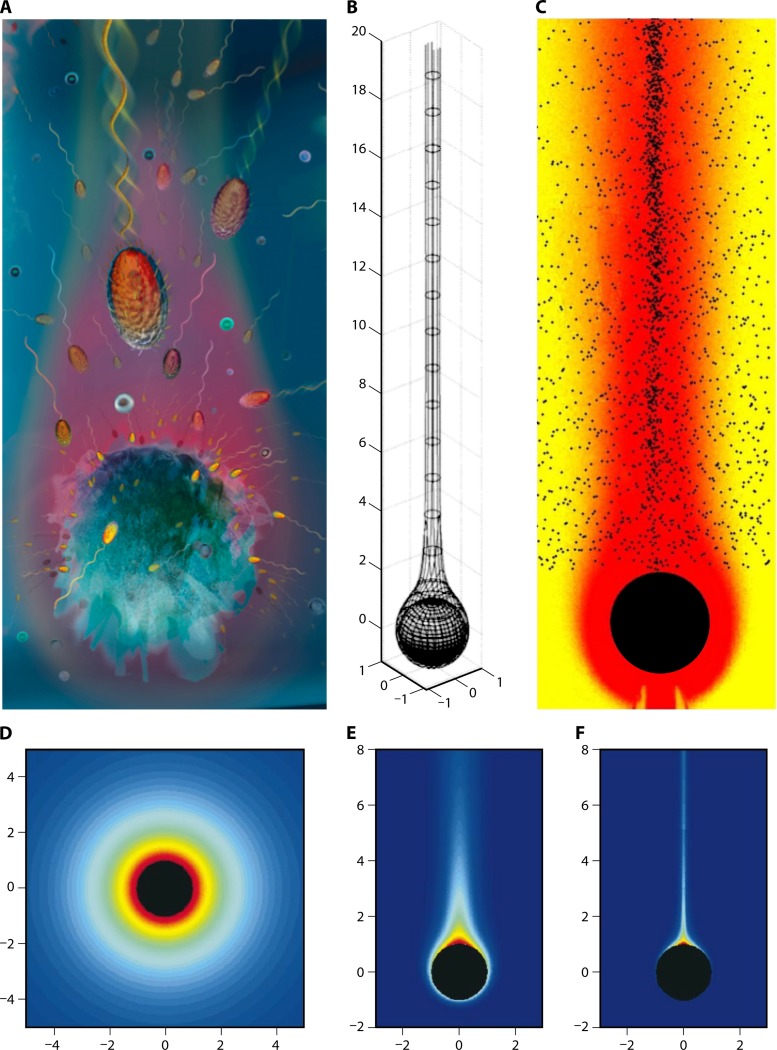Fig 4.
Marine particles. (A) Artist's view of the plume of dissolved organic matter emanating from a sinking marine snow particle. Magnified from Fig. 1B. (B) Mathematical model illustrating the large vertical extent that these plumes can achieve. Shown is a 0.5-cm-radius particle sinking at 1 mm/s. The plume corresponds to a concentration of amino acids of 30 nM above background. Distances are in units of particle radii. (Reproduced from reference 95 with permission.) (C) Chemotactic accumulation of P. haloplanktis bacteria in the plume of a particle, obtained by video microscopy using a microfluidic experimental model of a marine particle and its plume. Colors indicate concentration of solutes, and black dots are individual bacteria. The particle size was 500 μm and its sinking speed 110 μm/s, corresponding to a Peclet number of 110 (see panels D to F). (Reproduced from reference 186 with permission.) (D to F) The shape of the plume for different Peclet numbers. The Peclet number is a dimensionless index, obtained as the product of the particle radius, its sinking speed, and the inverse of the molecular diffusivity of the solutes forming the plume. Shown are plumes for Peclet numbers of 0 (D), 100 (E), and 10,000 (F). (Reproduced from reference 95 with permission.)

